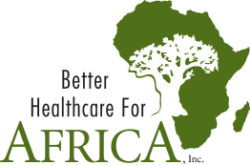According to the World Health Organization and UNAIDS, women in sub-Saharan Africa account for nearly 60 percent of all people living with HIV in that region. (Women account for 52 percent of all people living with HIV in low- and middle-income countries globally.)
Why this is so isn’t fully understood. Physical, social, cultural and economic factors can increase women’s vulnerability to HIV infection, but they don’t explain the whole picture. Recently, a team of Norwegian infectious-disease specialists working in South Africa’s KwaZulu/Natal Province proposed a new, plausible, but-still-unproven explanation: genital bilharzia infection.
Bilharzia, also called schistosomiasis, is a parasitic infection acquired in rivers, lakes and streams infested with the parasite. The mature parasite is a blood fluke (a trematode flatworm) that lives in tissues of an infected human.
The 10 May 2014 New York Times news story about this possible link between bilharzia and HIV infection noted that the parasite and eggs can cause fragile sores in the vagina that could make it easier for HIV to enter a woman’s body. Herpes infection and syphilis, which are known to increase the risk of HIV infection, cause similar sores. In addition, the sores attract CD4 immune cells, one of HIV’s preferred host cells.
The fluke’s complex life cycle in brief:
- It begins when an infected person releases eggs of the parasite in feces or urine; eggs trapped in the tissues, plus the parasite itself, cause an immune reaction that attracts CD4 cells.
- In freshwater, the eggs hatch and release a larval form that infects snails.
- In the snail, the larva becomes a second larval form called a cercaria (sir’karia).
- Cercariae leave the snail and swim in the water.
- Upon contact with humans, cercariae burrow into the skin, migrate through the tissues and veins until they lodge in a preferred location in blood vessels.
Three species of schistosomes infect mainly humans. Preferred locations in the body are veins near the intestines or liver, or in the urogenital area.
Some World Health Organization (WHO) statistics:
- 78 countries report schistosomiasis transmission.
- 249 million people required preventive treatment for schistosomiasis in 2012.
- 42.1 million people were treated for schistosomiasis in 2012.
WHO classifies schistosomiasis as one of 17 neglected topical diseases.
Thanks, everyone, and take care…Darrell
